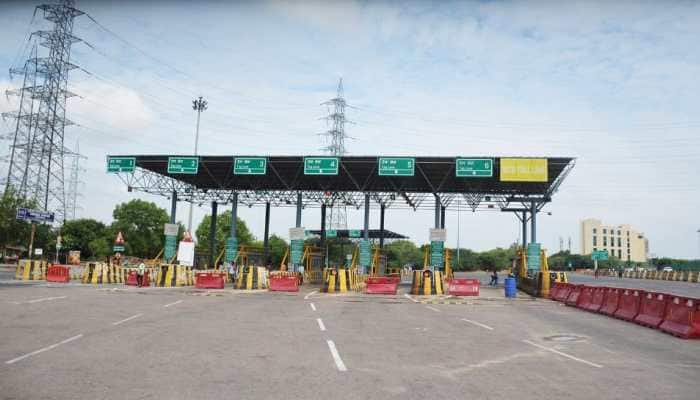US revives New Silk Road, Indo-Pacific Economic Corridor to counter China's OBOR; India may play key role
The US has revived two major infrastructure projects in South and Southeast Asia.
Trending Photos
) Representational image - File photo
Representational image - File photo Washington: In a significant move, the United States has revived two major infrastructure projects in South and Southeast Asia in which India would be a vital player.
The move could potentially act as a counter to China's ambitious Belt and Road initiative (OBOR).
The Trump administration has resuscitated the 'New Silk Road' initiative and the Indo-Pacific Economic Corridor linking South and Southeast Asia.
What US said about the projects:
A brief outline of the two projects was made available in the administration's maiden annual budget on Tuesday, which indicated that the 'New Silk Road' project would be a public- private initiative in which India would be an important player.
The state department said the budgetary request of its South and Central Asia will support the two initiatives - the New Silk Road (NSR) focused on Afghanistan and its neighbours, and the Indo-Pacific Economic Corridor linking South Asia with Southeast Asia.
This request will be leveraged through side-by-side collaboration with regional countries, other bilateral donors, multilateral development banks, and the private sector.
It said "the importance of... The NSR grows" as the transition in Afghanistan continues and the US "strives to help the Afghan people succeed and stand on their own."
The state department said it will deepen support for the objectives through "far-reaching" public diplomacy programmes.
According to James McBride of the Council on Foreign Relations, the NSR refers to a suite of joint investment projects and regional trade blocs that have the potential to bring economic growth and stability to Central Asia, as per PTI.
"Following the surge of 30,000 additional troops into Afghanistan in 2009, which President Barack Obama's administration had hoped would lay the groundwork for complete withdrawal a few years later, Washington began to lay out a strategy for supporting these initiatives through diplomatic means," McBride said.
The 'New Silk Road' initiative was first announced by then Secretary of State Hillary Clinton in July 2011 in a speech in Chennai.
Announcing her vision for a New Silk Road, Clinton had said, "Turkmen gas fields could help meet both Pakistan's and India's growing energy needs and provide significant transit revenues for both Afghanistan and Pakistan. Tajik cotton could be turned into Indian linens. Furniture and fruit from Afghanistan could find its way to the markets of Astana or Mumbai and beyond."
But the NSR strategy took a back seat during Obama's second term when John Kerry occupied the Foggy Bottom headquarters of the state department.
Here's why India had skipped Belt and Road Forum:
India had boycotted the Belt and Road Forum (BRF) held from May 14-15.
India had skipped the meeting due to its sovereignty concerns over the USD 50 billion China-Pakistan Economic Corridor (CPEC) which passes through Pakistan-occupied Kashmir (PoK).
No Indian official of any level was present at the elaborate opening ceremony attended by 29 heads of state and government along with top officials of the world bodies like the UN, the World Bank and the IMF.
Pakistani PM Nawaz Sharif, Sri Lankan Premier Ranil Wickramasinge, Russian President Vladimir Putin and Turkish President Recep Tayyip Erdogan were among the world leaders who had attended the meeting inaugurated by Chinese President Xi Jinping.
The US had sent a delegation led by Matt Pottinger, special assistant to the President and senior director for Asia at the National Security Council.
A day before the Summit, Baglay had said in New Delhi that, "Guided by our principled position in the matter, we have been urging China to engage in a meaningful dialogue on its connectivity initiative, 'One Belt, One Road', which was later renamed as 'Belt and Road Initiative'. We are awaiting a positive response from the Chinese side."
On the other hand, Chinese Foreign Ministry spokesperson Hua Chunying, while responding to Baglay's remarks, had said, "I think our ideas and actions are there for all to see. You can see the response of the international community towards this forum."
"Our attitude is always clear. We always want India to participate in the Belt and Road initiative. If they have the answer, they can give the answer to me, either in a public or private?" she had said.
Hua had said China always followed the principle of extensive consultation with other countries on the project over which India has sovereignty concerns.
What is OBOR:
The Belt and Road initiative includes a maze of roads and port projects.
While CPEC is highlighted as "flagship project", the B&R includes the Bangladesh, China, India and Myanmar (BCIM) Economic Corridor, New Eurasian Land Bridge, China-Mongolia-Russia Economic Corridor, China-Indochina Peninsula Economic Corridor and 21st century Maritime Silk Road.
Through the B&R initiative, China aims to link itself with markets in Europe and Africa through Asian countries and the Indian Ocean.
The port could potentially be used as a naval outpost for the Chinese military.
(With PTI inputs)
Stay informed on all the latest news, real-time breaking news updates, and follow all the important headlines in india news and world News on Zee News.
Live Tv







)
)
)
)
)
)
)
)
)
)

